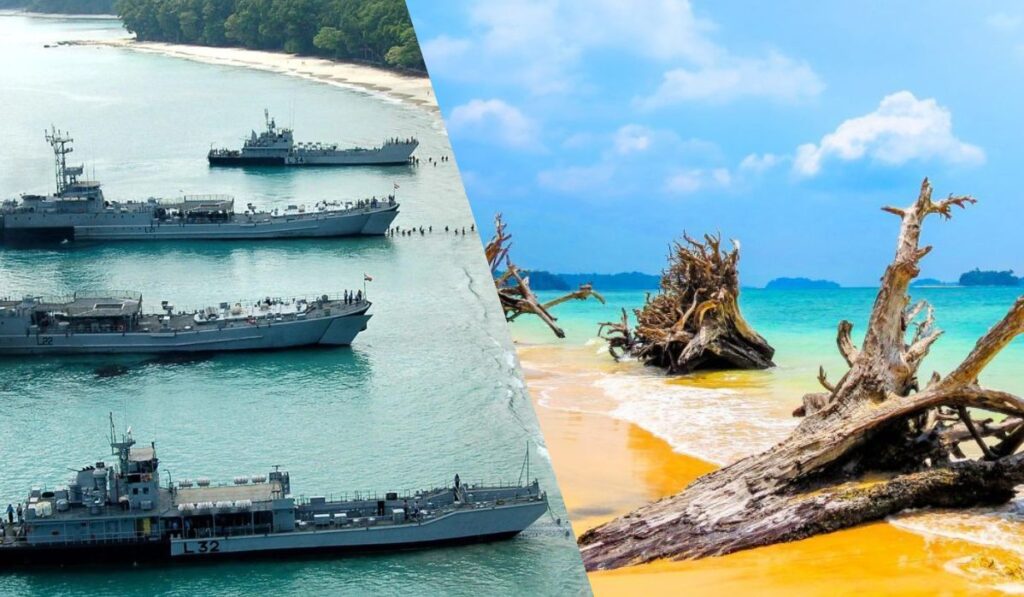Tarun Karthick
Sri Vijaya Puram, 21 September 2024
The Andaman and Nicobar Islands, often referred to as a hidden gem, hold immense potential for boosting India’s tourism economy. With its strategic location and breathtaking natural beauty, the Islands have the capacity to generate substantial per capita returns, outstripping many other regions in the country. Yet, this potential remains largely untapped, despite the significant investment by the Indian government.
At present, the central government spends heavily on the Union Territory of Andaman and Nicobar Islands, with little to show in return, apart from ensuring the strategic security of India’s maritime frontiers. The tourism potential, which could provide a significant economic boost, remains underutilized.
The reluctance to open up the Islands for external investments—whether from other parts of India or from global stakeholders—has hindered its development. The immense possibilities for tourism are clear, but restrictive policies and conservative approaches have stunted growth.
One striking example of a missed opportunity dates back to 2015, when SANAM, one of India’s most beloved pop-rock bands, released a rendition of the 1970s classic hit “Gulabi Aankhen” which has 365 Million Views on Youtube in September 2024. The music video was shot against the stunning backdrop of the Maldives. A comparable location for the video could have been the pristine B-Quarry Beach in Great Nicobar Island, but due to inadequate promotion of Andaman and Nicobar destinations, the opportunity was lost.
In recent years, foreign vloggers from countries like South Africa and England have been discovering the beauty of the Andaman and Nicobar Islands. During their travels, they were astounded by the pristine, untouched landscapes of South Andaman, Swaraj Dweep (Havelock), and Shaheed Dweep (Neil). Their surprise speaks volumes about the under-promotion of these destinations. Although these islands in the South Andaman District have experienced relatively more tourist activity, they still remain underexploited compared to their true potential.
What many fail to realize is that the Andaman and Nicobar Islands have so much more to offer beyond these popular spots. The natural beauty and biodiversity that could attract tourists remain largely hidden. The question arises: Why has the government not tapped into this potential and fully showcased the Islands to both domestic and international visitors?
One key reason lies in the governance model of the Andaman and Nicobar Islands. As a Union Territory, the Islands are centrally administered by the Union Government, with the Lieutenant Governor and the bureaucratic administration holding the reins. This model of governance, while ensuring national security, has led to outdated policies and limited attention to the development of tourism.
If the Islands had statehood or even a Union Territory with a legislative assembly, as seen in other regions, local elections and regular political engagement could have brought tourism into focus. The Islands would likely receive more attention from the central government, as a state-level administration would be motivated to tap into tourism as a source of economic development.
Unfortunately, the political stakes for the Andaman and Nicobar Islands remain low. Current central government efforts are more directed toward enhancing strategic interests, such as defence and maritime security, rather than actions that could directly benefit the local population or unlock the region’s tourism potential. As a result, the Islands continue to miss out on crucial opportunities to transform their economy and create a sustainable future through tourism.
Without decisive action and a shift in priorities, the Andaman and Nicobar Islands may continue to lag behind as a tourism destination, despite their extraordinary beauty and potential. As the world continues to discover new vacation spots, India must not let these islands fade into obscurity. There is much more to be gained from the Andaman and Nicobar Islands than just strategic security—tourism could be the key to unlocking its true value.

